Exercises for Hernia. Dos and Don’ts
By Dr. Priyanka Akhilesh Sali +2 more

Get,

to manage your symptom
Get your,


4 Cr+ families
benefitted

OTP sent to 9988776655



You’ve successfully subscribed to receive
doctor-approved tips on
Whatsapp

Get ready to feel your best.

Hi There,
Download the PharmEasy App now!!


Register to Avail the Offer
Send OTPBy continuing, you agree with our Privacy Policy and Terms and Conditions

Hi There,
Sign up on PharmEasy now!!
Trusted by 4 crore+ families

OTP sent to 9988776655



You have unlocked 25% off on medicines




Code: NU25
By Dr. Priyanka Akhilesh Sali +2 more
Table of Contents
Hernias are caused when a weakness in the muscle or tissue of the body allows an internal part of the body to push through1. Typically, a hernia occurs between the chest and the hips. There are few or no symptoms initially. However, you may notice swelling or a lump in your belly (abdomen) or groin.
3 of the most common types of hernia are:

Exercise can be safe for some people with hernias. It may be safe to exercise with a hernia, but caution should be taken. To prevent additional stress on your hernia, focus on activities that won’t strain that area. It is not recommended to perform exercises or lift routines that strain or pull the abdominal area when suffering from abdominal hernias. Nevertheless, there are several exercises to avoid. Working out safely begins by knowing which exercises to avoid.
Furthermore, working out with a qualified personal trainer or an accredited physiotherapist is recommended. The trainer or physiotherapist can help you with safe exercises. Consult your doctor before exercising when you have been diagnosed with a hernia or are recovering after a hernia operation.
Some evidence is that exercise or yoga can help with or speed up the healing process after Hernia surgery. Exercise and yoga are recommended by physicians and physical therapists for a healthy lifestyle. Understanding the right exercises and the time to begin them from your doctor is important.

Use the thigh muscles during Pillow Squeeze. Begin by lying flat on the floor and bending your knees. Inhale deeply while holding a pillow between your knees. As you exhale, squeeze the pillow gently with both knees. Make sure to repeat this exercise 20 times daily.

Keeping your knees in the same position, exhale while sitting with a pillow between them. Lift your waist and rest your arms on the floor to provide support. Try to stay as straight as possible from your shoulders to your knees. Take in as much air as you can. Sit with a pillow between your knees and return to the initial position. Repeat 20 times daily.
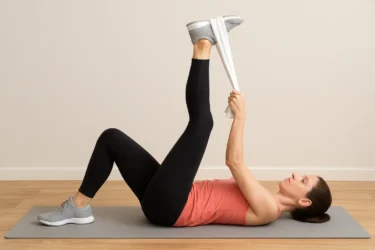
Bend your knees and lie down flat on the floor. Your head and chin should be at the same level. Then, raise one leg up, keeping the other leg bent. Try wrapping a towel around your foot and pulling the lifted leg towards yourself. Try to stretch your hamstring muscles until they feel a bit stretched. Hold that position for at least 30 seconds. Then go back to the starting position. Perform this exercise 10 times a day with each leg.
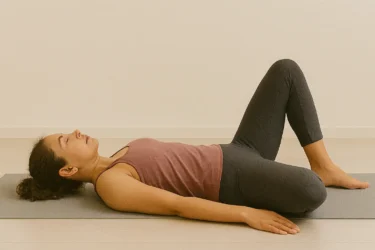
Keep your knees bent and inhale as you lie flat on the floor. As you exhale, open one knee sideways. Bring it as close to the floor as possible. Now bring the knee back. Proceed in the same manner with the other knee. Do this five times per day. Maintain a straight body position during the exercise.

Keeping your feet apart, bend your knees in the same position. Inhale as you hold your arms straight out in front of you. Inhale slowly as you roll over your hips on your right side. Bend both knees sideways. Do the same on the other side. Repeat this exercise ten times a day, then increase to 20.
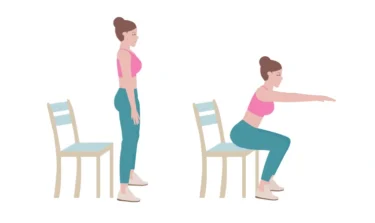
The pose helps strengthen the lower body and core. Keep your feet close together. Put your hands over your head while pressing your knees together. You should keep your thighs parallel to the floor by bending the knees as much as possible. Return to the starting position after holding the stretch as long as possible.
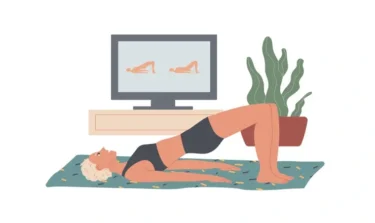
Strengthen the muscles in your stomach with this exercise. With both feet flat on the floor, lie on your back with the knees bent. Keep the shoulders down and lift the lower back off the floor. Remain in this position for as long as possible before returning to your starting position.

It strengthens the diaphragm and can benefit people affected by Hiatal hernias5. You can either sit up or lie down. One hand should go on the stomach, the other on the chest. Take a deep breath through your nose, focusing on your stomach as it rises. Focus on lowering the stomach as you breathe out through pursed lips. Repeat this a few times.
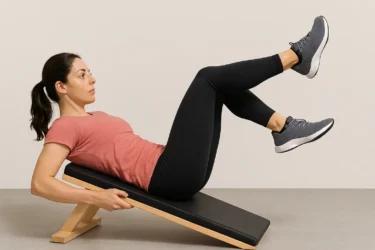
Strengthen your lower abdominal muscles by cycling your legs in the air. Lay on a slant board. You can remove excess pressure from your head and feet while exercising with slant boards. You can do bicycle leg exercises on your slant board by lifting your legs towards your chest. Stabilise yourself by holding your sides while pedalling your legs. Perform these exercises in 10 to 15-minute sessions three times every week.
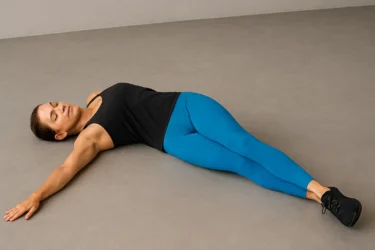
It is vital to maintain a flexible abdomen to reduce the risk of hernias. Keep your knees straight while you lie flat on the floor. Keeping your back firmly on the ground, bend your legs on each side and try to touch the surface. Keep the posture in place for 5-10 seconds, then return to your starting position. Repeat the exercise on the opposite side. You should perform this stretch daily. Stretching your abdominal muscles increases their flexibility, making them less likely to weaken under pressure.
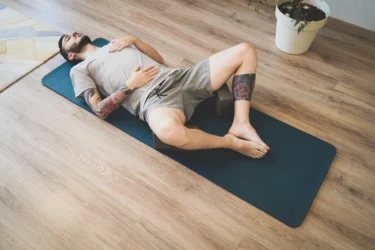
Any exercise should be performed with correct breathing. Take deep breaths from your abdomen rather than your chest. It helps release abdominal pressure by lifting the diaphragm. Your back should be on the ground. One hand should be placed on your chest, and the other on your belly. Let air enter your abdomen as you breathe through your nose. You should raise your lower hand instead of the hand on your chest as you breathe in.
To be done only after discussing with the surgeon:

In the aftermath of surgery, it is normal to feel some pain. In particular, after abdominal surgery, deep breathing can be quite painful, which makes people breathe very shallowly. Sometimes, the inability to expand the lungs properly can lead to infections in the bottom of the lungs. You should therefore take a few conscious deep breaths throughout the day. You should also use controlled coughing to rid yourself of phlegm or sputum. To aid in coughing and clearing the lungs properly, you can hold a pillow or towel near the surgical wound to provide some support.
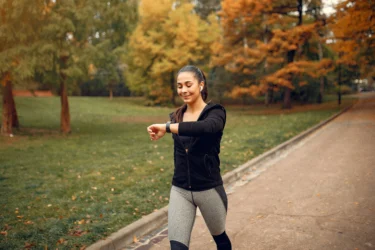
Walking around after hernia surgery is a highly recommended exercise to enhance the speed of your recovery. By doing so, you encourage your circulation to run smoothly and encourage your gut to keep working. It is important for patients to walk a little after surgery and increase the distance after recovery. Walking helps speed up recovery and prevents infection and blood clots.
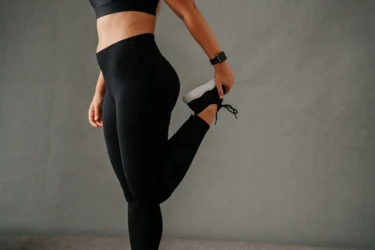
Leg exercises provide you with the strength to keep your legs mobile and prevent blood clots by keeping the circulation moving. Repeat each exercise several times to start with and increase repetitions as you get stronger.

Your core muscles will be strengthened, thus reducing the risk of hernias:
Also Read: Is It Possible to Increase Penis Size? Myths vs. Medical Facts
Certain exercises and activities should be avoided after your hernia surgery or if you have a hernia:
Also Read: 6 Best Yoga Poses & Exercises To Deal With Piles
When exercising with a hernia, keep certain tips in mind to make sure you remain safe. One of the most important steps is to avoid the exercises listed above. As part of your exercise routine, make sure that you include aerobic exercises, glute bridges and postural strengthening exercises.
Be sure not to overdo it. You should be gentle with yourself until your hernia has recovered. If you do it correctly, exercise will help you manage your hernia better and prepare you for surgery if necessary. After surgery, it is definitely an important part of your prevention plan
You always run the risk of worsening hernias when you begin exercising. Hence, patients must seek treatment for a hernia before participating in intense exercise. Every person is different therefore, it is mandatory to discuss with your doctor the right time to begin exercises and the type of exercise one should engage in.
Also Read: Food Choices for Hernia: What to Eat and Avoid
It is safe to exercise with a hernia, however, there may be risks to making your hernia worse. If done correctly, exercise can help you cope with your hernia better6. Ensure to be careful and not overdo your exercises or perform any strenuous exercises. Consult your doctor before doing any exercise.
The benefits of exercise may help you manage many chronic health conditions and alleviate the symptoms of a hernia. However, you must be careful, as some exercises can cause strain on your affected area and may worsen your hernia.
Core exercises such as crunches, planks, sit-ups and some pilates, in other words, exercises that are more advanced, should be avoided. Performing heavy lifting exercises, including deadlifts and squats, at a high intensity, can result in your hernia getting worse. In addition, avoid sports with high impact or contact. Avoid bending down and lifting anything heavy at home.
Yes, walking is a highly recommended exercise for a person suffering from a Hernia. You can go for short walks unless advised otherwise by your doctor.
Disclaimer: The information provided here is for educational/awareness purposes only and is not intended to be a substitute for medical treatment by a healthcare professional and should not be relied upon to diagnose or treat any medical condition. The reader should consult a registered medical practitioner to determine the appropriateness of the information and before consuming any medication. PharmEasy does not provide any guarantee or warranty (express or implied) regarding the accuracy, adequacy, completeness, legality, reliability or usefulness of the information; and disclaims any liability arising thereof.
Comments

Leave your comment...
You may also like
Comments